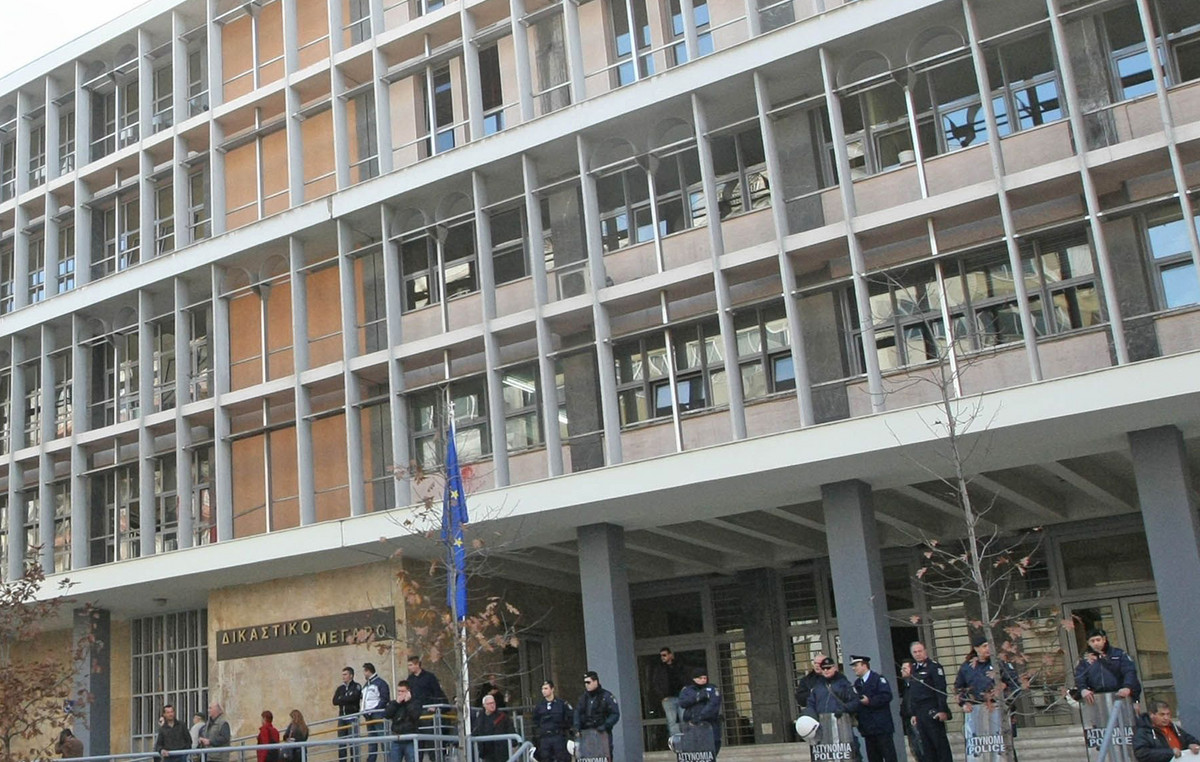Hurricane Beryl tore through the Windward Islands on Monday (1st) as a Category 4 and extremely dangerous storm, with strong winds and heavy rains that put the lives of residents at risk.
Beryl made landfall early this morning on Grenada’s Carriacou Island in the Caribbean Sea with winds of more than 150 mph (240 km/h). It is the strongest hurricane to ever hit the Grenadines, according to data from the National Oceanic and Atmospheric Administration (NOAA), which dates back to 1851.
There were “widespread reports of destruction and devastation in Carriacou and Petite Martinique,” Grenada Prime Minister Dickon Mitchell said at a news conference Monday. “Within half an hour, Carriacou was devastated.”
Mitchell said there were no immediate reports of deaths or injuries, but warned that could change.
“You have to appreciate the ferocity and the strength of the hurricane, and so we are not out of the woods yet,” he said. “And we cannot say for certain that no one was injured or that there was no loss of life as a result of the hurricane.”
The storm knocked out power across the island chain. About 95 percent of the island of Grenada lost power due to Hurricane Beryl, Neila K. Ettienne, press secretary for the prime minister’s office, told CNN on Monday. Telecommunications across Grenada are out of service, and some individuals have lost internet service, Ettienne explained.
All schools and businesses are closed, including the airport, the secretary said, adding that only hospitals and the national police force are currently operational. The airport reported a sustained wind speed of 92 mph and a gust of 121 mph Monday afternoon, according to the National Hurricane Center.
As of Monday night, the southern Windward Islands are still experiencing “tropical storm conditions, dangerous surf and heavy rainfall,” according to the center.
Beryl’s arrival marks an unusually early start to the Atlantic hurricane season. On Sunday, it became the earliest Category 4 hurricane on record in the Atlantic Ocean and the only Category 4 hurricane in the month of June. The unusually warm ocean waters that facilitated Beryl’s alarming strengthening are a clear indicator that this hurricane season will be far from normal in a warming world due to fossil fuel pollution.
Beryl is breaking records in June because the ocean is warm now. It typically only gets this warm at the height of hurricane season, said Jim Kossin, a hurricane expert and science adviser at the First Street Foundation.
“Hurricanes don’t know what month it is, they only know what the environment is,” Kossin told CNN . “Beryl is breaking records for the month of June because Beryl thinks it’s already September.”
Kossin added that the ocean heat fueling Beryl’s unprecedented strengthening “certainly has a human fingerprint on it.”
Latest information on Hurricane Beryl
- Beryl is a dangerous hurricane: The storm was located 200 kilometers northwest of Grenada, with winds of 241 km/h and was moving west-northwest at 34 km/h on Monday night. Beryl’s hurricane-force winds extend 64 kilometers from the center, while tropical storm-force winds extend about 201 kilometers. The center of the storm is expected to move away from the southern Windward Islands on Monday night and cross the southeastern and central Caribbean Sea by Tuesday (2), and is forecast to pass near Jamaica on Wednesday (3).
- Life-threatening storm surge and flooding: The National Hurricane Center warned that “storm surge will raise water levels to 9 feet (2.7 meters) above normal tide levels in areas of onshore winds near the location where the eye of the hurricane will reach the hurricane warning area.” The center also noted that large waves from the storm will continue to impact the Windward Islands for the next two days. “Surf surge is also expected to reach the southern coasts of Puerto Rico and Santo Domingo Island late tonight through Tuesday. These swells are expected to cause potentially deadly surf conditions and rip currents,” it said.
- Hurricane Watch: Heading toward Jamaica, with hurricane conditions possible through Wednesday. Tropical Storm Watches are in effect for St. Vincent and the Grenadines, Grenada, Martinique and St. Lucia, as well as the southern coast of the Dominican Republic from Punta Palenque west to the Haitian border, and the southern coast of Haiti from the Dominican Republic border to Anse-d’Hainault.
- Hundreds ordered to evacuate: More than 400 people were being housed in hurricane shelters across Barbados on Sunday night, Ramona Archer-Bradshaw, Chief of the Barbados National Shelter, told the CNN CBC News.
- State of emergency in Grenada: A state of emergency declared late Sunday by Grenada’s Governor General Cécile La Grenade will remain in effect until Tuesday morning. All businesses are closed except for the police, hospitals, prisons, garbage collection and ports.
- Airports remain closed: Airports in Barbados, Grenada and St. Lucia were closed on Sunday night as Beryl approached. Grenada’s Maurice Bishop International Airport is expected to reopen on Tuesday morning, a spokesman said. Barbados’ Grantley Adams International Airport and St. Lucia’s Hewanorra International and George Charles airports have also halted operations.
- Cricket World Cup fans stranded: Barbados is still welcoming cricket fans from around the world who have travelled to the island for the T20 World Cup, some of whom are not expected to leave until Monday or Tuesday, Barbados Prime Minister Mia Amor Mottley said. “Some of them have never been through a hurricane or storm before,” she added, urging residents to provide support to visitors if possible.
Where is Hurricane Beryl headed next?
Landing on dry land is far from the end of Beryl’s story, and its long-term trajectory remains uncertain.
The hurricane will track generally west or northwest over the Caribbean Sea through Thursday (4), and is expected to remain a major hurricane – Category 3 or stronger – through mid-week before losing some strength.
Still, the hurricane will remain intense, with high winds, torrential rains and dangerous seas extending well beyond its center over much of the Caribbean. The center of Beryl could pass south of Jamaica on Wednesday and bring more intense impacts to the country, even if it does not make direct landfall there.
It is likely that several days will pass between Beryl’s first arrival in the Windward Islands on Monday and its next likely stop in Mexico’s Yucatan Peninsula around Friday morning (5).
What happens after Beryl’s next landfall will also determine whether the cyclone is able to reach the Gulf of Mexico over the weekend. If Beryl can survive its journey over land and reach the warm waters of the Gulf of Mexico, it could spell trouble for northeastern Mexico or possibly the U.S. Gulf Coast.
An unprecedented start to hurricane season
This season has already gotten off to a busy start with the arrival of a second storm, Tropical Storm Chris, which made landfall near Tuxpan, Mexico, on the Gulf Coast on Monday.
Beryl is marking a worrying start to hurricane season, which forecasters have warned will be hyperactive – and Beryl’s record activity could be a sign of things to come.
Beryl is the first major hurricane — defined as Category 3 or higher — to make landfall in the Atlantic in 58 years. The storm’s rapid intensification is highly unusual for this early in the hurricane season, according to National Hurricane Center Director Mike Brennan. It is rare for tropical systems to form in the central Atlantic east of the Lesser Antilles in June, particularly strong ones, as only a handful of tropical systems have ever formed, according to NOAA records.
The storm isn’t just early for this season. It’s now the third-largest hurricane in the Atlantic Ocean. The first was Hurricane Alma on June 8, 1966, followed by Hurricane Audrey, which reached hurricane status on June 27, 1957.
Beryl also set the record as the most easterly hurricane to form in the tropical Atlantic in June, surpassing a previous record set in 1933.
Traditionally, the central and eastern Atlantic become most active in August, in part because ocean temperatures have had time to warm and fuel the development of systems.
This year, however, the Atlantic basin has seen above-normal water temperatures and a lack of wind shear due to the transition from El Niño to La Niña season, both of which are fuel for tropical development.
The systems that form in early summer in this part of the Atlantic are a sign of the hyperactive hurricane season to come, according to research by Phil Klotzbach, a hurricane expert and scientist at Colorado State University. Typically, ocean temperatures aren’t warm enough in June and July to help tropical systems thrive.
National Weather Service forecasters predict 17 to 25 named storms this season, with up to 13 of them becoming hurricanes.
“That’s well above average,” Brennan noted.
Source: CNN Brasil
Bruce Belcher is a seasoned author with over 5 years of experience in world news. He writes for online news websites and provides in-depth analysis on the world stock market. Bruce is known for his insightful perspectives and commitment to keeping the public informed.







